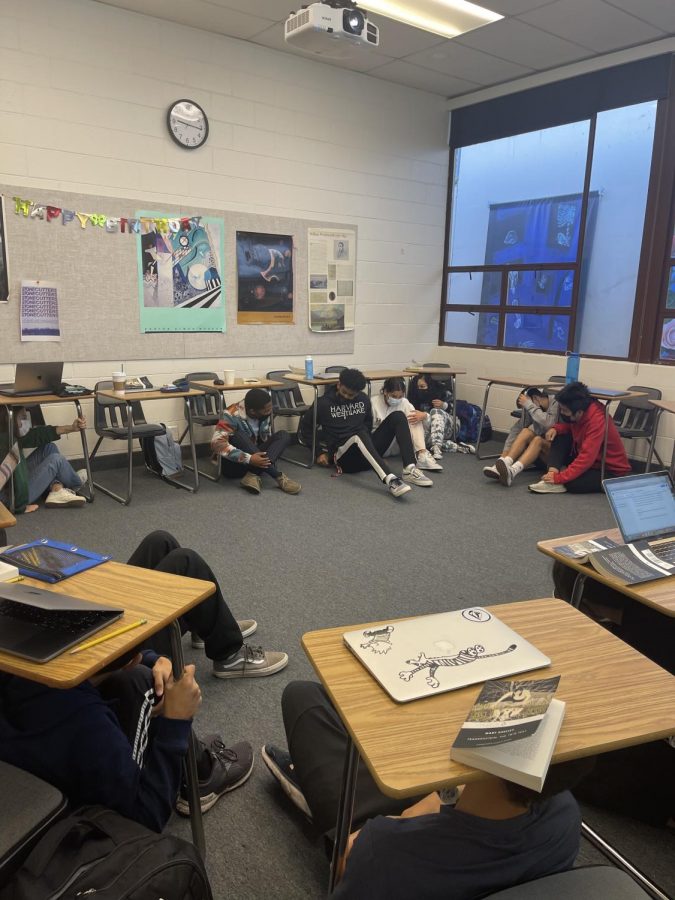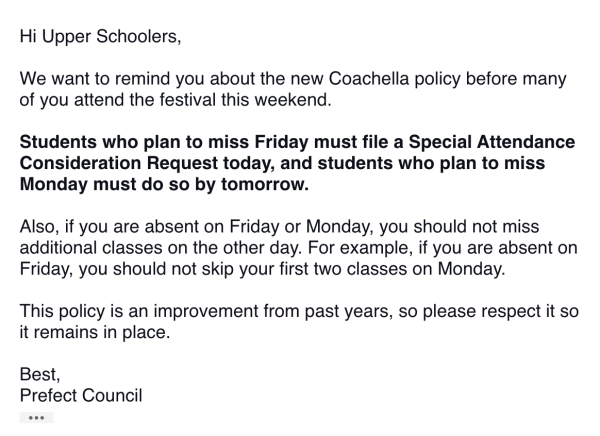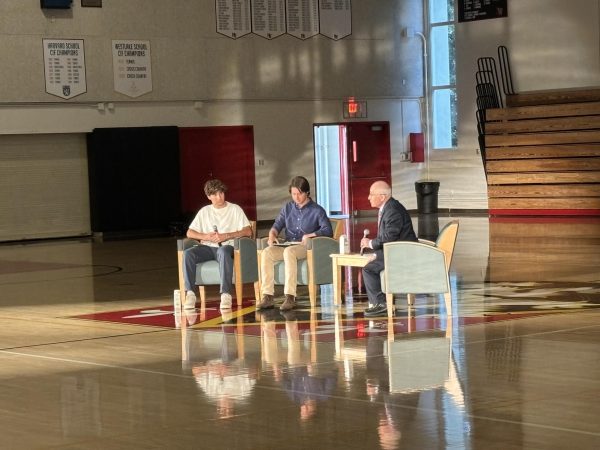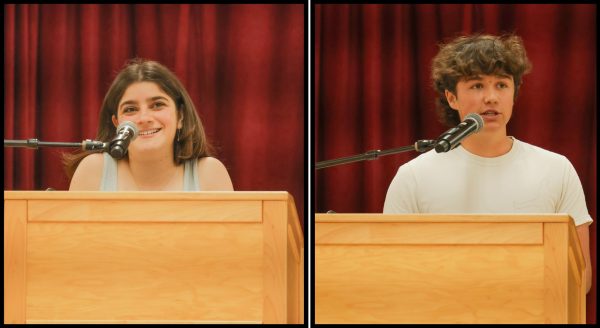Students participate in the “Great Shakeout” earthquake drill
Students “drop, cover and hold” under their desks before heading to the field to get into their dean groups.
October 22, 2021
Students and faculty participated in the “Great Shakeout” earthquake drill on Thursday morning.
Schools across the United States observe the “Great ShakeOut” earthquake drill to raise preparation awareness . In an email sent Wednesday, Upper School Student Discipline and Attendance Coordinator Gabriel Preciado explained the earthquake exercise instructions as well as the importance of DROP, COVER, and HOLD, physical protection methods.
At approximately 9:13 a.m., students received an email alert through the school’s emergency notification system directing them to DROP, COVER and HOLD inside their classrooms. Once they stayed in the HOLD position for 30 seconds, students were guided by teachers to proceed to the Emergency Assembly Area on Ted Slavin Field where they were to line up alphabetically by grade level and report to their deans for attendance.
The Community Health Officer and the Director of Emergency Preparedness Milo Sini said he thought the drill was successful.
“Emergency drills take coordination with different departments to make sure the proper objectives are achieved,” Sini said. “We were able to review and educate the school community about Drop, Cover, and Hold (on), and we were also able to practice the attendance piece and account for everyone on campus. Both were two of our objectives today.”
Sadye Lackman’22 said she felt the drill was run efficiently given the short duration.
“I think that it was pretty effective for how little time it took, and I like that it didn’t seem like a scare tactic or anything,” said Lackman. “Overall, I think [the drill] was a relaxed but still informative exercise without any unnecessary panic.”
Jack Austen ’23 said that he was unsure of how similar the simulation would be to an actual earthquake, but felt it was an effective way to prepare for earthquakes.
“I didn’t think the drill was super accurate simply because it seems like it only accounted for when students were in a classroom or building with their teachers, which won’t necessarily be the case during an actual earthquake,” Austen said. “However, I’m glad that the school has a method in place for ensuring all students are in one place in case of an earthquake, which is a crucial factor in the event an emergency occurs.”









































